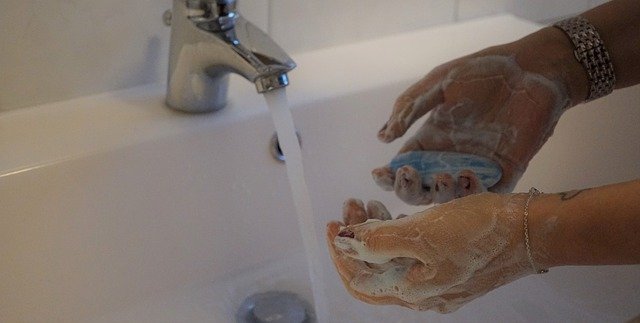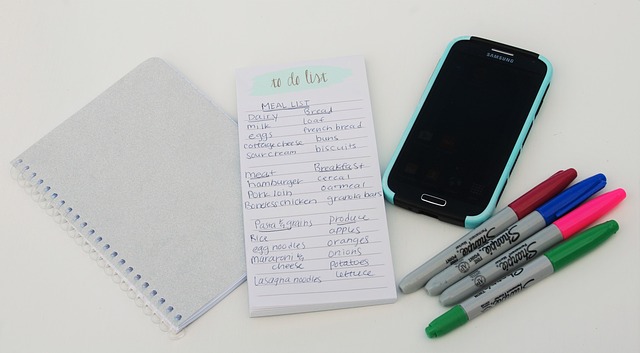Sanitisation, social distancing and quarantine are some of the words that have become synonymous with the year gone by, all due to the spread of COVID-19. You may have been subjected to a home quarantine or know of someone who has had to undergo this form of social isolation. While it might be harsh, a house quarantine keeps you safe and allows you to play a part in helping society overcome the virus that has changed our world.

What is a house quarantine and why do we need it?
Quarantining at home is a form of self-isolation where you stay put at home and avoid all forms of social contact with others. This is necessary when you develop symptoms or have come into contact with the source of an infectious disease. The quarantine period lasts as long as the infection period of the disease or until there is absolute surety that you have not become infected.
A quarantine is vital because it helps us stay on top of the disease by slowing down the spread of the infection.
How long will I need to be in home quarantine?
You will need to undergo a house quarantine if you develop symptoms of infection or have been exposed to people who are infected. For COVID-19, the isolation period is 14 days. On Day 12, you will undergo a test and if that is negative, your quarantine can end on Day 14.

It is imperative that you have a test on the 12th day of the isolation period to ensure your quarantine can end on the 14th day as long as you are tested negative. If no symptoms arise during the length of the entire quarantine period, it is very unlikely for you to be infected and you can end the isolation on the 14th day.
Staying physically fit in home quarantine
Just because you are stuck at home, it doesn’t mean that your exercise routine should come to standstill. If you don’t have a regular fitness schedule, this is a great time to experiment. There are many reasons to exercise regularly, and you should be able to set aside some time every weeke to get moving.
While a home quarantine will prevent you from going to the gym or working out in the outdoors, you can do plenty of great workouts at home:
- Try focusing on specific trouble areas: Do a back workout for niggling backaches.
- Build up your muscle strength with weights or bodyweight workouts. Why should I build muscular strength?
- Try this at-home Pilates workout.
- Try a simple stretching session for better flexibility.
- Focus on your abs with these at-home ab workouts.
- Perfect your form so you can do burpees the right way with this burpee guide.
- If all this seems intense, you could always try a yoga session with the thousands of YouTube instructors. Choose a relaxing or challenging workout depending on your preferences
- If you are sorely missing your gym, bear in mind that a number of items within the home can substitute for hand weights. Pick up some food can or bags to add extra weights to your workouts.

Read about how to begin (and stick to!) a home workout schedule, even after your home quarantine is over.
How do I ensure I stick to a diet while undergoing home quarantine?
It is easy to cave in to junk food during a house quarantine. This is not only because your normal routine has been upturned, but also because the mental challenge of being restricted to your home can leave you frustrated and angry.
When you plan meals, try to follow these tips:
- Stock up on foods like pasta and rice that are easy to cook and will last for a long time
- Eat fruit every day and include vegetables in every meal plan
- Plan your meals so you can stock up on meat, eggs, or vegetarian sources of protein.
- Buy frozen fruit, vegetables and meat if fresh food is difficult to come by. Frozen food is a better option than packaged food.
- Avoid buying processed and packaged junk food so you don’t have to worry about being tempted.
Eating healthy is a good idea at any time, but even more so when you are quarantining. Check out our beginners’ guide to healthy eating.
Will I have to home quarantine if a family member has been infected?
Unfortunately, if even a single member in your home contracts an infection, the entire family will have to be under house quarantine. Depending on how you look at it, quarantining with your family or fellow house mates for 14 days could be a blessing or a challenge.

Consider the following suggestions to make it easier:
- No member of the family should be allowed to leave the house – plan for groceries to be delivered, errands to be done online or postponed, and no visitors to be allowed in.
- If one member of the family is ill, they should be quarantined to a room. Nobody else goes in to that room, except a designated adult who understands all the precautions required.
- Wear face masks at all times to prevent the spread of the infection.
- If you home has more than one bathroom, allocate one exclusively for the sick member if possible.
- Your doctor will provide you with instructions about looking after the patient. Do ensure that you stick to these and monitor the patient for oxygen and temperature as directed.
- Every item – crockery, bedlinen, bathroom, clothes – used by the patient should be kept separate from those of the rest of the house.
- Make sure there is a separate wastepaper basket in the patient’s room. When you empty the bin and dispose of the trash, follow all the instructions provided by the doctor.
- All surfaces in the house especially high-traffic areas like the kitchen counter and doorknobs should be wiped down with disinfectant multiple times a day.
- Ensure plenty of rest, water and healthy meals for the sick family member.
Do I need to use masks during home quarantine?
Face masks are an absolute must while being under house quarantine, especially if you are ill or sharing the premises with an infected individual.

You can purchase masks from all pharmacies and most hardware stores. It is best to consult your medical practitioner for usage but there are some common tips you can bear in mind:
- All disposable masks should be discarded after a single use
- Make sure to wash reusable masks with hot water and tumble-dry them
- When assisting a patient or entering their room, use a P2 or N95 mask that is fitted closely to your face.
- Wear the mask properly ensuring it fits snugly around your face with a good seal. The seal should be over the nose and the mouth with no gaps between face and mask
- Make it mandatory for the ill person to wear a mask if they come out of their room.
- When you come out of the patient’s room and take off your mask, make sure you wash your hands thoroughly with soap and water.
How to home quarantine with your family
There is no denying that a house quarantine will affect the daily life of your family, and this could be difficult for every member and all ages. You can make it easier on yourself and your family through the following:
- Talk to your child’s school to get assignments, worksheets and homework over email
- Have ‘time-outs’ from one another so that everyone has some space. This means allocating different areas of the house to different family members.
- When planning activities like cooking or cleaning, consider the schedule of everyone equally. Each member of the family should have time to do the things that are important to them.
- Accept that some level of conflict is natural in a situation like this and talk to kids about helping out and resolving disputes quickly and amicably.
- Plan time for entertainment that comes from technology and television as well as other non-tech hobbies. Try to create an atmosphere for reading time, board games, learning or playing music, or gardening.
- For members of the family who have to work from home or study from home, plan the day’s activities around the schedule.
Maintaining mental health during home quarantine
A house quarantine may stir up feelings of anxiety, frustration, fear, and boredom. Over the course of 14 days, you should try to implement some of these suggestions to keep you sane.
- Stick to your daily routine as far as possible. Wake up at the same time you usually wake up and eat meals at the same time. This gives you some semblance of reality and comfort, and when your quarantine is over you will be able to adjust faster.
- Make sure to get some daily exercise. You could do yoga, tai chi, online courses, walk around the backyard or even use household items as weights
- Keep in touch with friends and loved ones through telephone, video calls, emails and other forms of social media.
- Have a discussion with kids to help them understand why they can’t play outside or meet their friends.
- Get comprehensive instructions from your doctor and local authorities and ensure you have all the numbers you’ll need to get remote advice when needed.

Staying social during home quarantine
A house quarantine restricts your physical movement but it doesn’t mean that you avoid social ties. In fact it has been proven that maintaining relationships and bonds with loved ones can go a long way in boosting your mental health during these trying times. Try out these ways to ensure that a quarantine does not sever your ties with the outside world:
- Start a virtual movie or book club with others in quarantine
- Maintain an online journal or post tips to help others who may have to quarantine in the future
- Make use of technology to schedule video calls, emails, texts or chats with friends or family members whom you haven’t spoken to in a long time
If I test negative, will I still have to quarantine?
Yes. If you test negative after exposure or do not have any symptoms, you may still need to quarantine. This is because you might be within the incubation period and symptoms will only develop in a day or two.
Monitor your health and watch out for these symptoms:
- Fever
- Dry cough
- Tiredness
- Body ache
- Sore throat
- Diarrhoea
- Headache
- Loss of taste or smell
- Difficulty breathing or talking
- Chest pain or pressure
- Loss of speech or movement
If you feel the onset of any of these symptoms, seek immediate medical help and get tested as soon as possible.
Preparing for a home quarantine
If you know in advance that you will have to quarantine (if you are travelling or have an infected family member coming to stay), it is easier to be fully prepared. Here are some tips:
- Stock up on a two-week supply of long-lasting food items such as powdered milk, pasta, rice and frozen vegetables
- Buy enough prescription and non-prescription medicines and drugs to last you for the entire period
- Reach out to friends and relatives to let them know you’ll be unavailable
- Make a list of chores you may need help with from outside, like getting groceries dropped off at your doorstep.
- Stock up on disposable tissues, masks, disinfectant, wipes and gloves
- Have a first-aid kit handy at home and ensure it has a thermometer and paracetamol

Home quarantining can be mentally and physically challenging, but keep in mind that you are playing your part in keeping your family and community safe. Almost everywhere in the world, people are quarantining for the same reason.
Keep your spirits up, stick to a routine as far as possible, and stay in touch with loved ones. If you would like to chat with a counselor online to help you deal with the situation, Avaana can help you.



